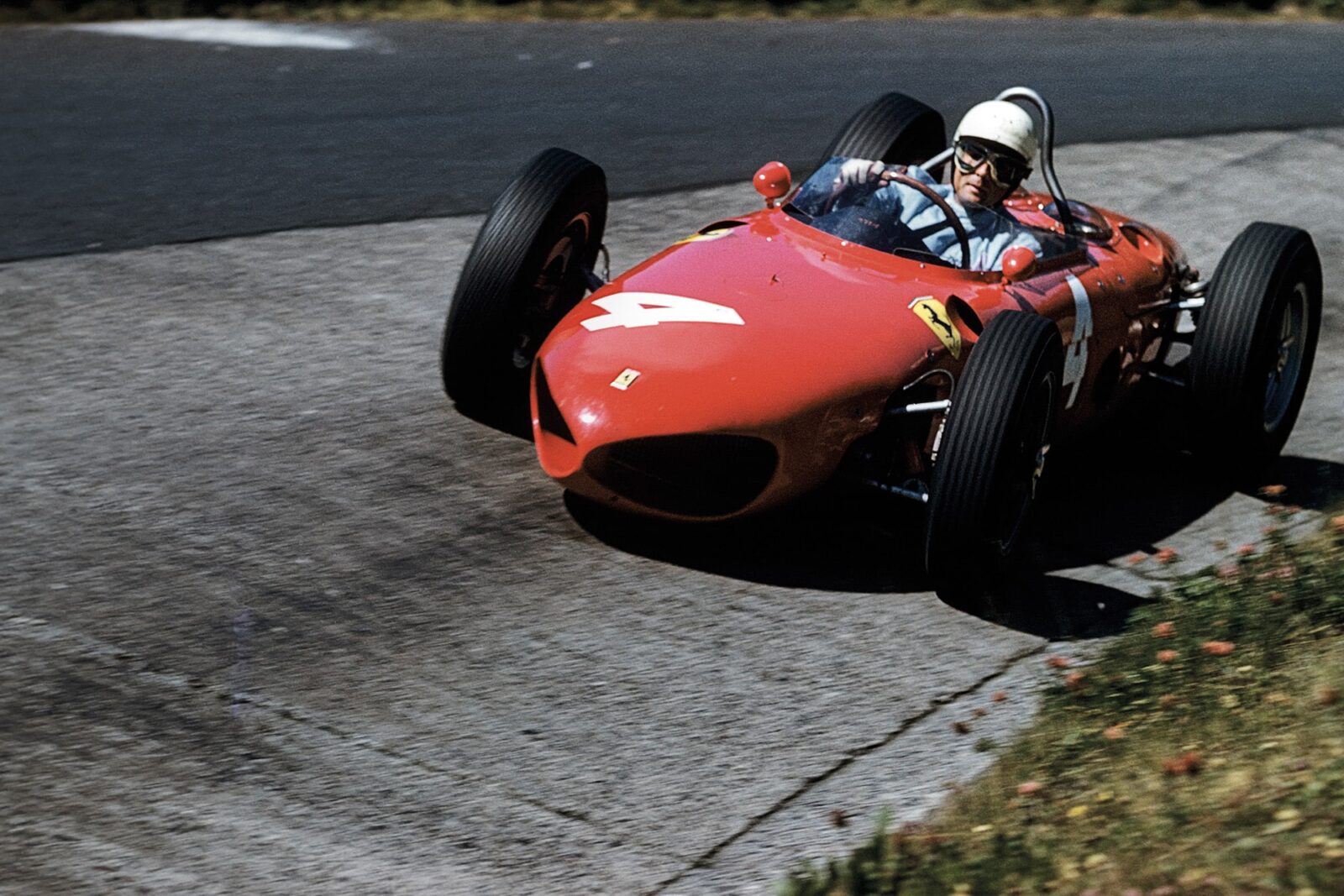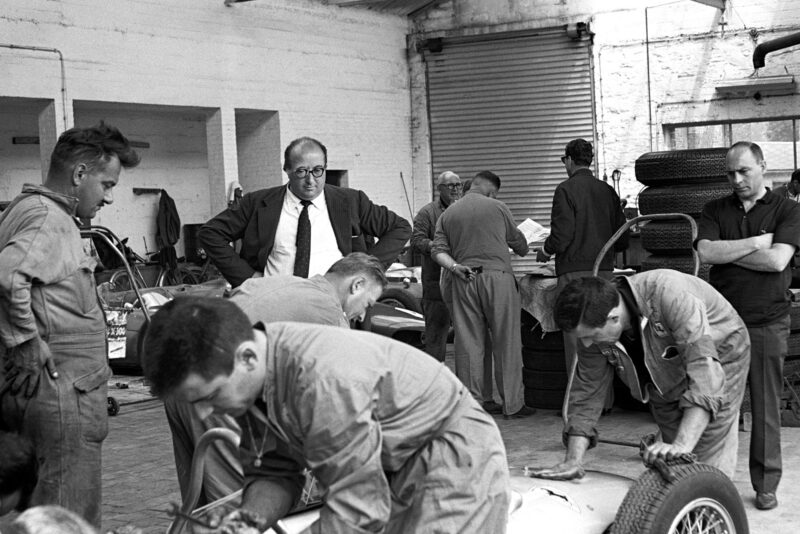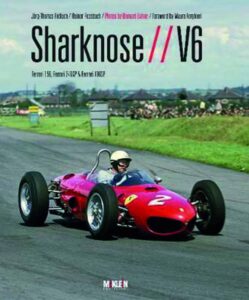Shark attack: the unique Ferrari 156
Ferrari hit the ground running when F1 rules went to 1.5 litres, as Gordon Cruickshank finds from a lavish new book on the V6 cars

Phil Hill in the 156 that would take him to the 1961 world title, although Stirling Moss would win this Nürburgring round
Bernard Cahier/Getty Images
Is it simply those bizarre nostrils that make the Ferrari 156 such a memorable machine? Or the striking name which so easily pins down one model among the huge variety of Ferrari development types? (Not that I’ve ever seen a shark whose nose looks anything like that.) After all, one F1 design wins the constructors’ championship every year, and sometimes the drivers’ title as well; this design took both but only in one single year. Yet that unforgettable shape and its domination that season has made it one of the mechanical legends of the Formula 1 circuit, and this book aims to give you its entire story.
Being frank, the 156 was a middling car sporting the finest engine on the grid – as so often with Ferraris. Its chassis was torsionally weak and Innes Ireland described the handling as “modest at best”. Yet especially once the initial F2 power plant was replaced by the wide-angle V6 nothing could stay with it, mechanical maladies and Stirling Moss apart. Such a shame that we never saw the dark blue Sharknose with a white Rob Walker stripe across its nose that was promised to Stirling Moss for 1962. It would surely have looked stunning in that livery. But as the book carefully describes, the Scuderia failed to develop the car during its winning season, while a too variable driver line-up and the famous ‘palace revolution’ effectively scuppered any chance of carrying that one season of success on to the following year.
Lavishly illustrated with some stunning and unpublished photos, both black-and- white and colour from Bernard Cahier’s archive, this hefty tome, printed in both English and German, launches in with a short rundown of the 156 story followed by detailed race by race tales, from the F2 car which developed the new-to-Ferrari mid-engined principle in 1960, through that gloriously dominant year of ’61 and on to the ignominious end a year on, which Födisch describes as “a botched season”.
Then the twin-nostril 196 and 246 sports cars have their turn before the authors switch focus on the core figures of the V6 project with biographies, accompanied by fine photo portraits, of all the drivers who handled these cars and then more interestingly, or perhaps I should say less usually, there are pen portraits of people from the Scuderia itself including engineers Carlo Chiti and Mauro Forghieri, racing director Eugenio Dragoni who irritated so many around him, and even Medardo Fantuzzi, the coachbuilder who actually created the shape of this remarkable car.
After some technical specs and a full catalogue of the car’s results, we switch to an interesting chapter on Jan Biekens’ magnificent recreation of the yellow 156 which Olivier Gendebien drove in the Ardennes Grand Prix in that glorious year when the Maranello cars finished 1-2-3-4. All the original 156s were scrapped in their time, so a replica was the only option if he wanted one. Inspired by among other things Chris Rea’s La Passione film, Biekens set out to find as many original parts as he could, found both engine and transaxle and had Jim Stokes build a car. Then, astonishingly, its next owner Jason Wright decided to improve it and replaced the first body, then chassis, and followed that up with obtaining an original 120-degree V6 from the Bardinon collection and building a second car to replicate the machine in which Phil Hill clinched the 1961 title. Both those tales are told here by the two creators.

Engineer Carlo Chiti, centre, was the architect of the V6 motors which powered Ferrari’s 156
GP Library/Universal Images Group via Getty Images
One mild disappointment in this impressively produced, costly book was not finding any technical drawings or cutaways of the car or its components, though there are some detail shots of parts of the cars being assembled in period. On the other hand, Forghieri himself, for so long the technical kingpin of Ferrari and very involved with Chiti’s 156, writes a preface in which he laments that lack of development preparing for 1962. He could see the error of this attitude but “Carlo Chiti did not care about the opinions of others”. He must have been relieved that his boss Chiti was one of those who disappeared in the famous ‘night of the long knives’.
I suppose it is unavoidable on a work about the 156, but the book includes that tragic shot from Monza in 1961 showing a shocked and helpless Jim Clark standing by his damaged Lotus while cars continue to race past the lifeless body of Wolfgang von Trips lying on the track. Equally disturbing is the sight of spectators crowding the very barriers where moments before 15 of their number lost their lives.

There’s another photo that made me look twice: one of coachbuilder Fantuzzi gazing at the unpainted prototype he has created; far from the cool designer you could easily imagine, he appears here as a corpulent, slouching figure in grimy overalls. Yet he had that uniquely Italian talent for conjuring beauty from a few sketches and a sheet of aluminium alloy. All credit to him. Still, the one question I find myself asking having read this huge work is – why was the nose shaped that way? Was it for aerodynamic penetration? There’s one tiny mention of wind tunnel testing. Or improved cooling? It can’t have been that superior – in steamy Syracuse they had to add a couple of ventilation slots up front. Nor was it carried on, barring that pair of Ferrari sports cars, which abandoned it after a season. Perhaps it was simple artistic creativity and I shouldn’t ask, any more than one would quiz Cellini about why he shaped his Perseus that way.
Sharknose V6
Jörg-Thomas Födisch & Rainer Rossbach
McKlein, ISBN 3947156243 £115
